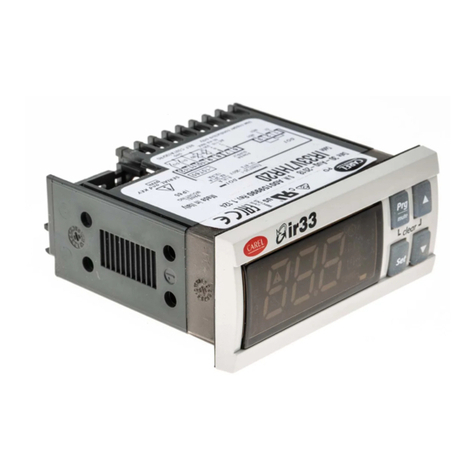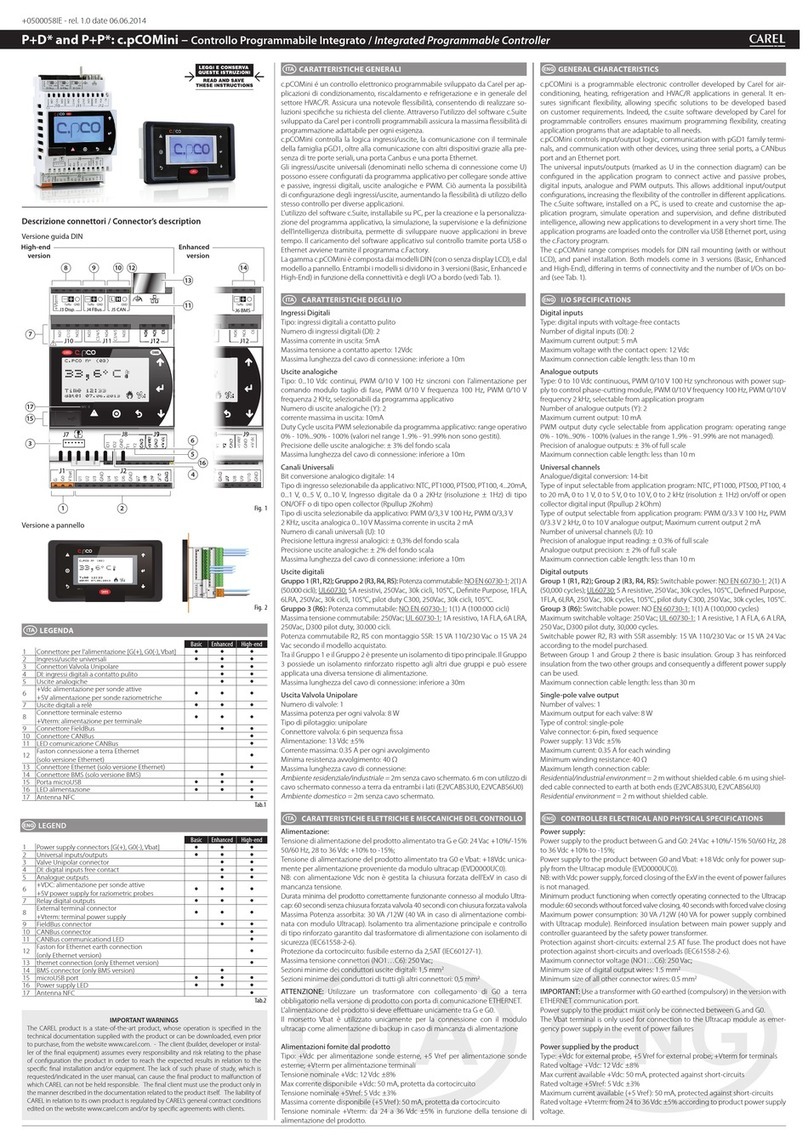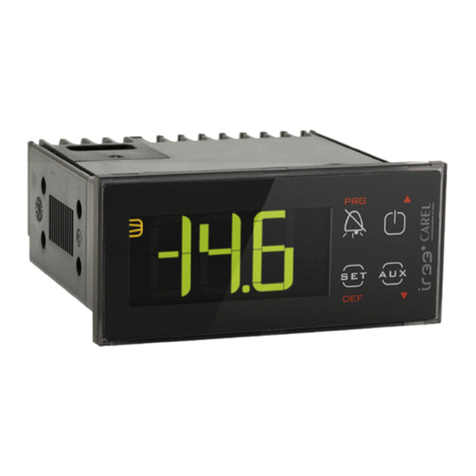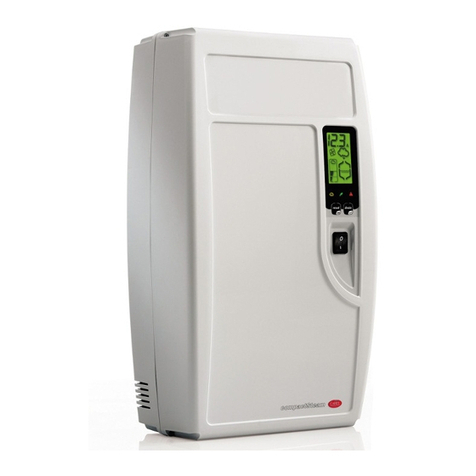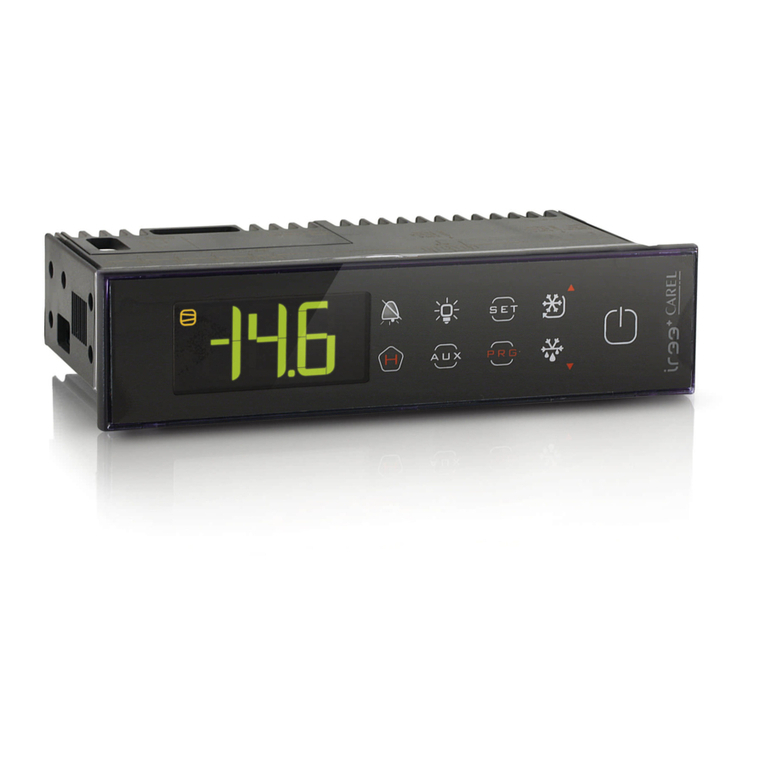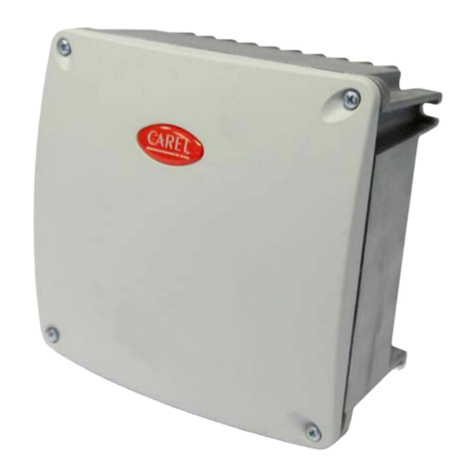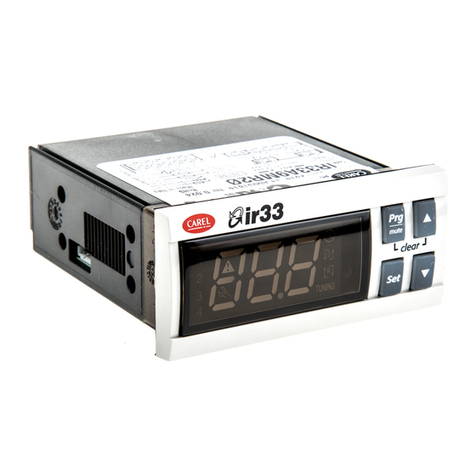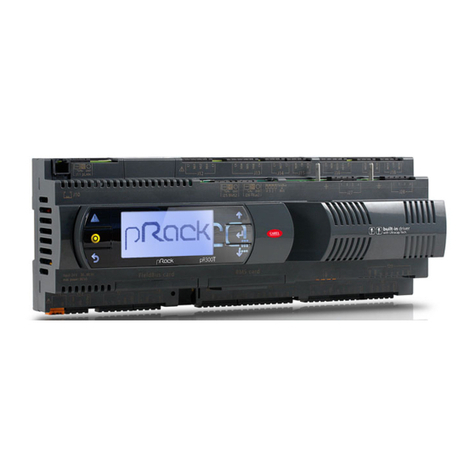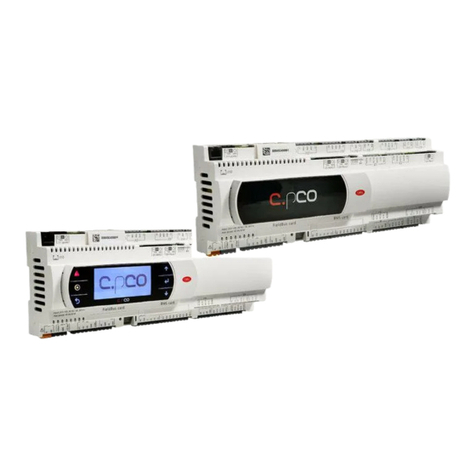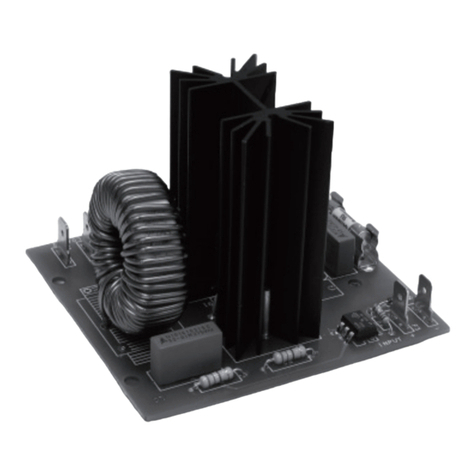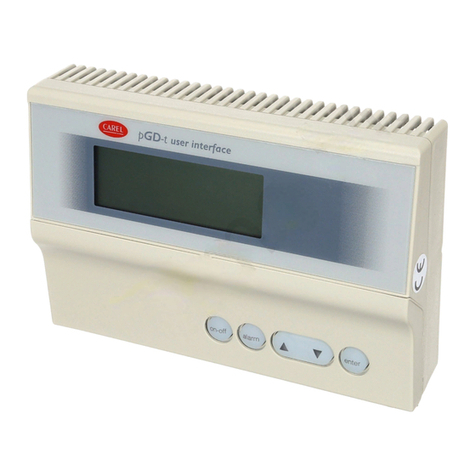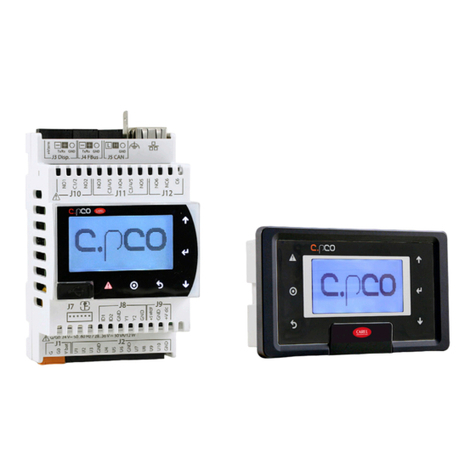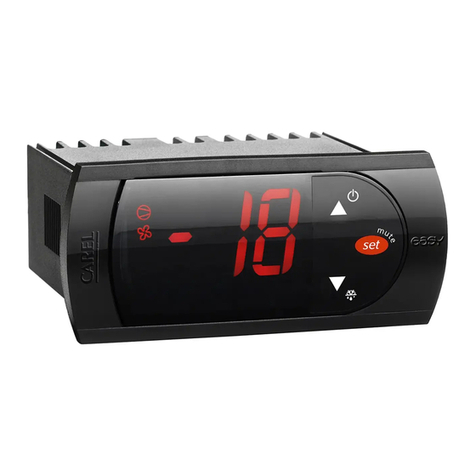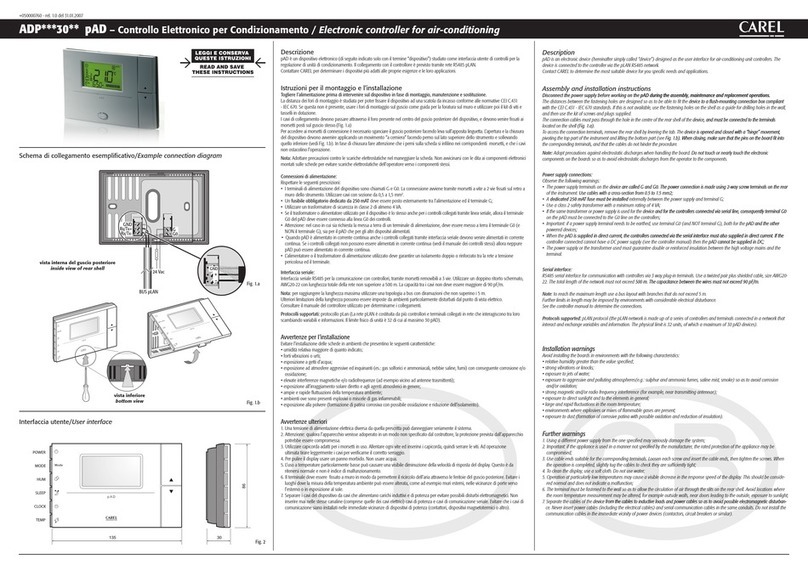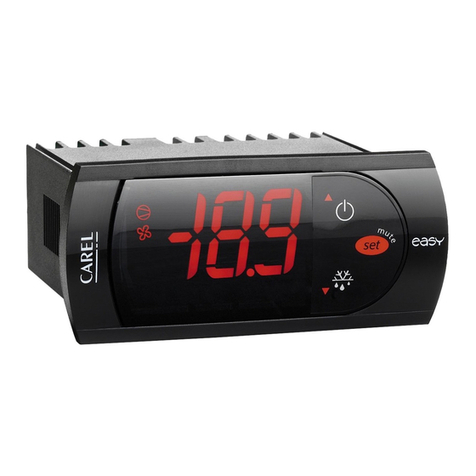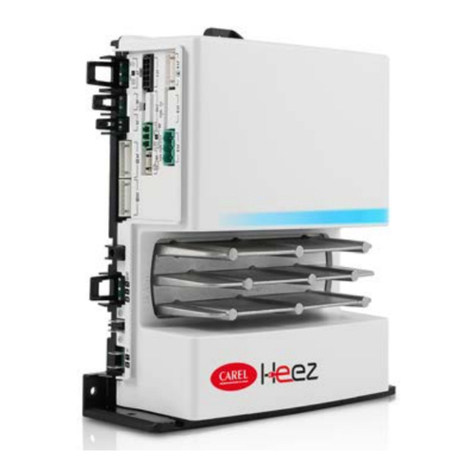INTRODUZIONE
Il pCOXS nasce dall’esigenza di rendere disponibili le potenzialità dei
controllori programmabili della famiglia pCO sistema anche a tutte
quelle applicazioni che finora erano coperte solo dai controlli
parametrici.Grazie a questo nuovo controllore, il software di
regolazione per chiller e pompa di calore a singolo circuito, piccoli
roof-top e condizionatori di precisione può essere velocemente
personalizzato in base alle specifiche esigenze del singolo costruttore.
Le caratteristiche del pCOXS si sposano perfettamente anche con le
esigenze dei costruttori di centrali trattamento aria. Infatti, è prevista
una versione dedicata con protocollo MP-Bus della Belimo.
Il pCOXS garantisce, inoltre, la completa compatibilità con tutte le
attuali interfacce utente del pCO-sistema (LED, LCD alfanumerico, LCD
grafico), con tutti i controllori del pCO sistema (pCOB, pCOC, pCO1,
pCO2), con tutti i moduli integrabili con la rete pLAN (moduli di
regolazione di velocità FCM, driver per valvola espansione elettronica
EVD, controllo per unità canalizzate e piccoli roof-top ARIA).
1. CARATTERISTICHE GENERALI
Tutte le versioni di questi controllori utilizzano un microprocessore a 16
bit a 24 MHz e fino a 2 MByte di memoria FLASH per garantire elevate
prestazioni in termini di velocità e disponibilità di memoria.
1.1 pCOXS
1.1.1 Caratteristiche comuni a tutte le versioni
• Microprocessore a 16 bit, 24 MHz, registri interni ed operazioni a
16 bit, 512 Byte di RAM interna;
• 1 MByte FLASH MEMORY per programma;
• 128 kByte RAM statica;
• 1 seriale RS485 per pLAN;
•1seriale locale per tLAN, in alternativa una versione per il
collegamento in seriale “MP-Bus Belimo”;
• è predisposto per il collegamento in rete di supervisione RS485;
• contenitore plastico DIN per installazione su guida omega (8 moduli);
• alimentazione 24Vac e 20/60Vdc;
• connettore telefonico per terminali pCO;
• LED presenza alimentazione.
• 6 ingressi digitali contatti puliti;
• 5 uscite digitali a relè (di cui una con contatto in scambio e
2 opzionali come SSR);
• 2 ingressi analogici configurabili tra NTC, 0/1V, 0/5V, 0/20 mA, 4/20mA.
• 2 ingressi analogici configurabili tra NTC e 0/5V;
• 2 uscite analogiche 0/10Vdc.
• 1 uscite PWM per il controllo di regolatori di velocità a taglio di fase.
1.2 Programmabilità
Il pCOXS offre la possibilità di essere programmato con il sistema di
sviluppo EasyTools, con i seguenti vantaggi:
• trasferimento del software su diversi hardware Carel.
Le applicazioni sviluppate per il pCO, pCO2o Macroplus possono
essere portate semplicemente e velocemente sul pCOXS (e viceversa),
adattando solo gli ingressi e le uscite;
• rapida realizzazione, a un costo competitivo, di programmi
personalizzati;
• affidabilità garantita dall'utilizzo di routine standard collaudate sul campo.
L'uso di EasyTools, inoltre, offre al cliente la possibilità di garantirsi il
massimo grado di riservatezza e di autogestione qualora decida di
sviluppare programmi ex novo per conto proprio.
La possibilità di utilizzo di uno stesso hardware in applicazioni diverse
ne garantisce la standardizzazione con i noti vantaggi di poter avere
INTRODUCTION
The pCOXS has been designed specifically to provide the functions of
the pCO sistema family programmable controllers to all those
applications that are covered only by parametric controllers.Thanks to
this new controller, the control software for single-circuit chillers and
heat pumps ,small roof-top units, and precision air conditioners, can be
quickly customised based on each manufacturer's requirements.The
characteristics of the pCOXS perfectly suit the requirements of the
manufacturers of air-handling units.Indeed, a dedicated version with
Belimo MP-Bus protocol is now available.
Furthermore, the pCOXS ensures complete compatibility with all the
current pCO sistema user interfaces (LED, alphanumeric LCD, graphic
LCD), with all the pCO sistema controllers (pCOB, pCOC, pCO1, pCO2),
with all the pLAN modules (FCM speed control modules, EVD drivers
for electronic expansion valves, ARIA controllers for multiplexed units
and small roof-top units).
1. GENERAL CHARACTERISTICS
All the versions of these controllers use a 16-bit 24MHz
microprocessor and up to 2 Mbyte flash memory, thus ensuring high
performance in terms of processing speed and memory space.
1.1 pCOXS
1.1.1 Characteristics common to all the versions
• 24MHz, 16bit microprocessor, 16bit internal registers and
operations, 512 byte internal RAM;
•1Mbyte FLASH MEMORY for the program;
•128Kbyte static RAM;
•1RS485 serial connector for pLAN;
•1local tLAN serial connection, or alternatively a version for
“Belimo MP-Bus”serial connection;
•ready for connection to RS485supervisory network;
•DIN plastic case for DIN rail installation (8 modules);
•24Vac and 20/60Vdc power supply;
•telephone connector for pCO terminals;
•poweron LED.
•6digital inputs free contact;
•5digital relay outputs (1 of which with changeover contact and
2 optional SSR);
•2analogue inputs, configurable as NTC, 0/1V, 0/5V, 0/20mA, 4/20mA.
•2analogue inputs, configurable as NTC and 0/5V;
•2x 0/10Vdc analogue outputs.
•1PWM outputs for phase-cutting speed controllers.
1.2 Programmability
The pCOXS can be programmed using the EasyTools development
system, with the following advantages:
•transfer of the software to differ ent types of Carel hardware.
The applications developed for the pCO, pCO2or Macroplus can
simply and quickly transferred to the pCOXS (and vice-versa),
modifying only the inputs and the outputs;
•rapid development, at competitive costs, of custom programs;
•reliability guaranteed by the use of standard routines, tested in the
field.
The use of EasyTools, moreover, ensures the customer the maximum
level of privacy and self-management when developing new programs
on their own.
The possibility to use the same hardware for different applications
allows standardisation, with the clear advantages of being able to
7pCOXS manual - cod. +030220345 - rel. 1.0 - 18.03.03
